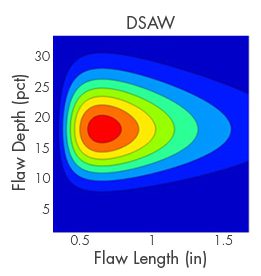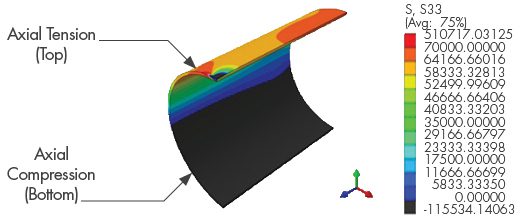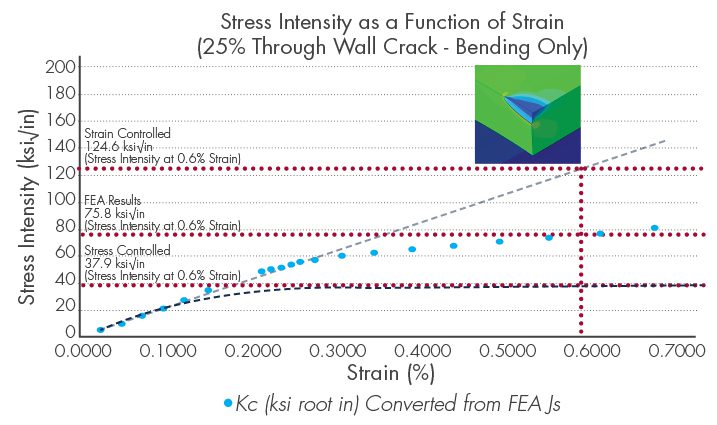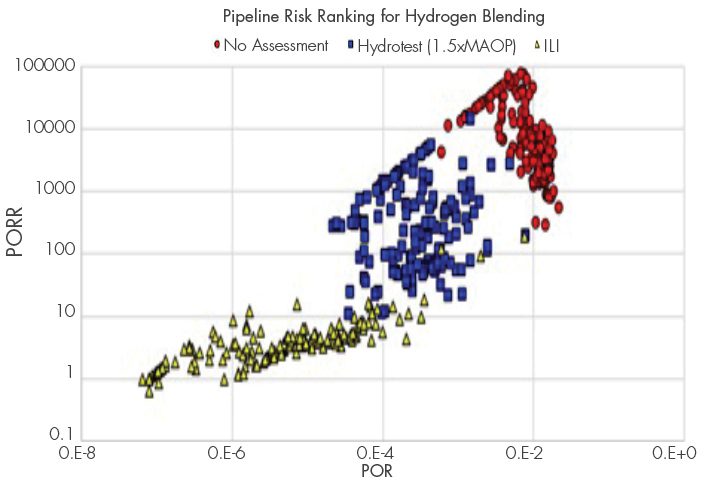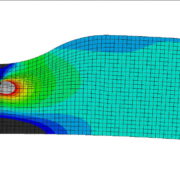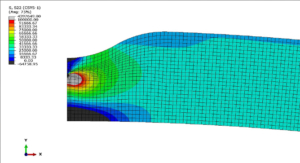News & Views, Volume 53 | An ECA Process for the Impact of Hydrogen Blending on Girth Weld Defects
By: Scott Riccardella, Owen Malinowski and Chris Tipple
Several pipeline operators have established pilot demonstration programs to blend hydrogen with natural gas (hydrogen blending) in their gas transmission pipelines. Structural Integrity Associates (SI) has been providing clients technical consulting support to complete engineering critical assessment (ECA) projects to help evaluate the potential impact to pipeline integrity and help ensure the safety of the public, customers, employees, and the natural gas pipeline infrastructure.
In a recent study, girth weld defects were identified as a key threat to pipeline integrity, particularly when the pipeline is exposed to large axial strain due to soil movement (which can be experienced from landslides, underwater erosion, storm surge, ground settlement and lateral spreading). The impact to girth weld defects combined with large strain can pose a significant threat that is further exacerbated with hydrogen blending. SI developed and implemented a program to complete a detailed ECA using probabilistic risk modeling to assess the probability of rupture (POR) to an offshore pipeline that had experienced significant strain due to erosion of the channel area, pipeline movement, and sand waves in the sea channel.
To complete the ECA, a probabilistic analysis was performed consisting of the following activities:
REVIEW OF IN-LINE INSPECTION RESULTS
- Recent strain data collected from an Inertial Mapping Unit (IMU) In-Line Inspection (ILI) tool were reviewed and analyzed to create a map of applicable strain at each girth weld in the study.
MATERIAL PROPERTY, DEFECT AND OPERATING DATA ANALYSIS
- Pipe populations were developed with specific characteristics that make them more compatible with hydrogen blending, or less compatible due to the respective susceptibility to hydrogen-related threats under different operating conditions.
- SI developed Statistical distributions for key material properties (strength, toughness, wall thickness, etc.) and girth weld defect characteristics (length, depth, etc) using client specific and industry databases.
- SI reviewed and incorporated relevant material tests performed to evaluate the effects of targeted hydrogen blend levels on the materials of interest (carbon steel base metal, longitudinal seam welds and girth welds).
DETERMINISTIC ANALYSIS USING FINITE ELEMENT MODELING (FEM)
- A finite element analysis was utilized to determine the stress intensity factor of a circumferentially oriented crack subjected to high bending loads resulting in large axial strain. The elastic-plastic analysis was used to determine the stress intensity factor as a function of strain, for a circumferentially oriented, externally breaking crack subject to a bending stress.
DEVELOPMENT OF A FRACTURE MECHANICS MODEL 9for probabilistic modeling)
- From the FEA results a simplified elastic model was developed relating the stress intensity factor to the peak tensile axial strain resulting from bending.
- SI incorporated the stress intensity factor from this model into an API 579 FAD based evaluation of girth weld, crack-like defects.
REVISIONS TO SI SYNTHESIS™ SOFTWARE
- SI has developed specialized risk analysis software tools to evaluate pipeline POR which were applied to evaluate the impact or hydrogen blending to the POR.
- The software was specifically enhanced for this analysis to incorporate the following items:
- Evaluation of flaws associated with circumferential cracking (such as those that may be encountered in vintage girth welds).
- Incorporation of secondary loads and stresses (such as those encountered through land/soil movement).
PROBABILISTIC ANALYSIS
- SI applied the probabilistic framework to evaluate the increased susceptibility to failure imposed from hydrogen blending with special consideration for ground movement and girth weld defects.
- This framework used Probabilistic Fracture Mechanics (PFM) and addressed the following phenomena associated with hydrogen blending:
- Accelerated crack growth rates and
- Hydrogen embrittlement of the pipeline steel.
- The POR was then evaluated for each active threat on the pipeline, comparing the risks associated with pure natural gas service to natural gas with hydrogen blending, considering various assessment options (hydrotest or ILI) prior to hydrogen injection.
CONCLUSION
Key challenges have been identified with blending hydrogen in gas transmission pipelines. The susceptibility to failure of girth weld defects exposed to significant strain can be further exacerbated by the presence of hydrogen. SI has developed a probabilistic framework and supporting tools to complete an ECA and provide a better understanding of the threats and subsequent impact to risk posed by cracks and crack-like defects in a hydrogen blending environment.


